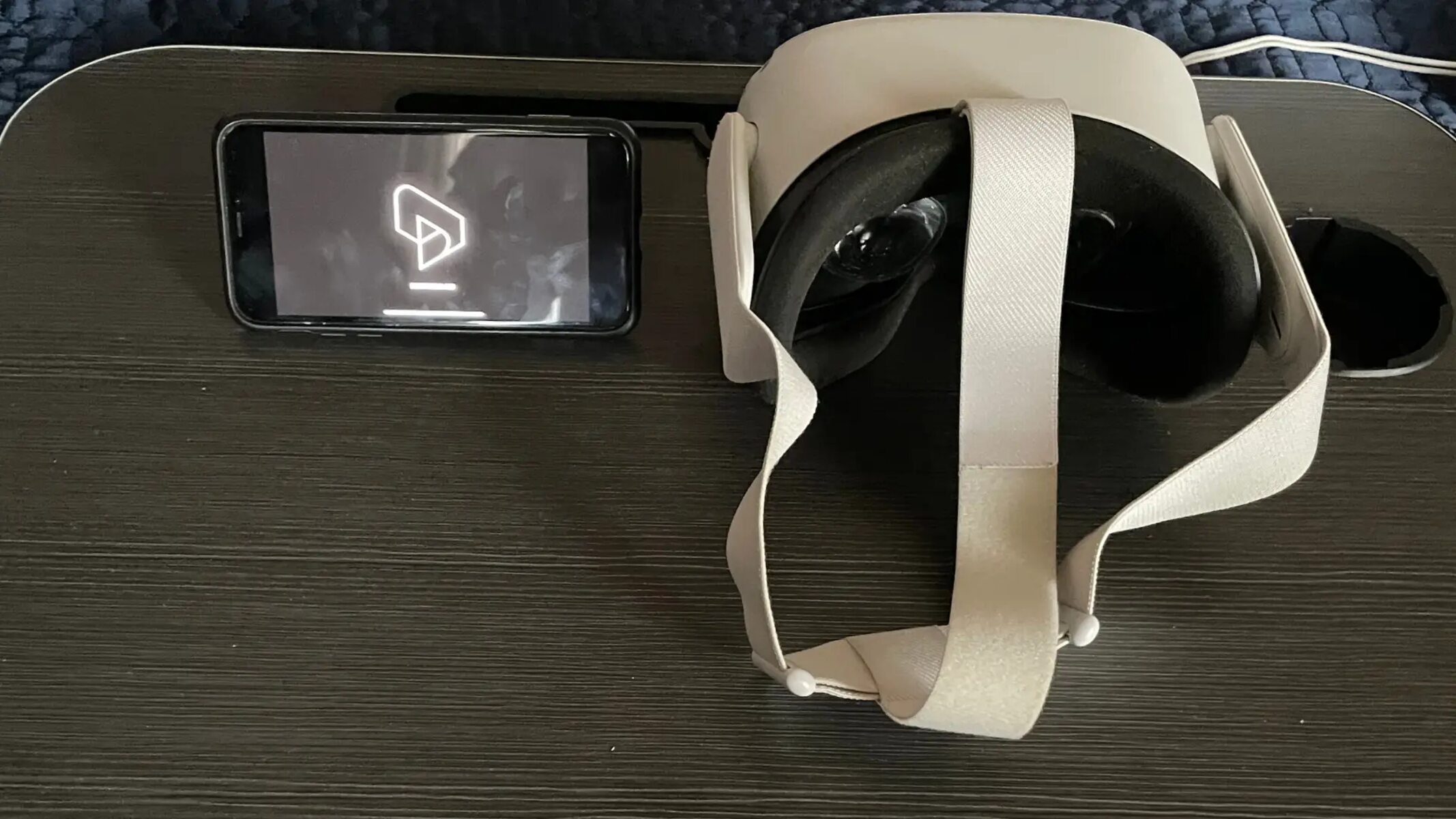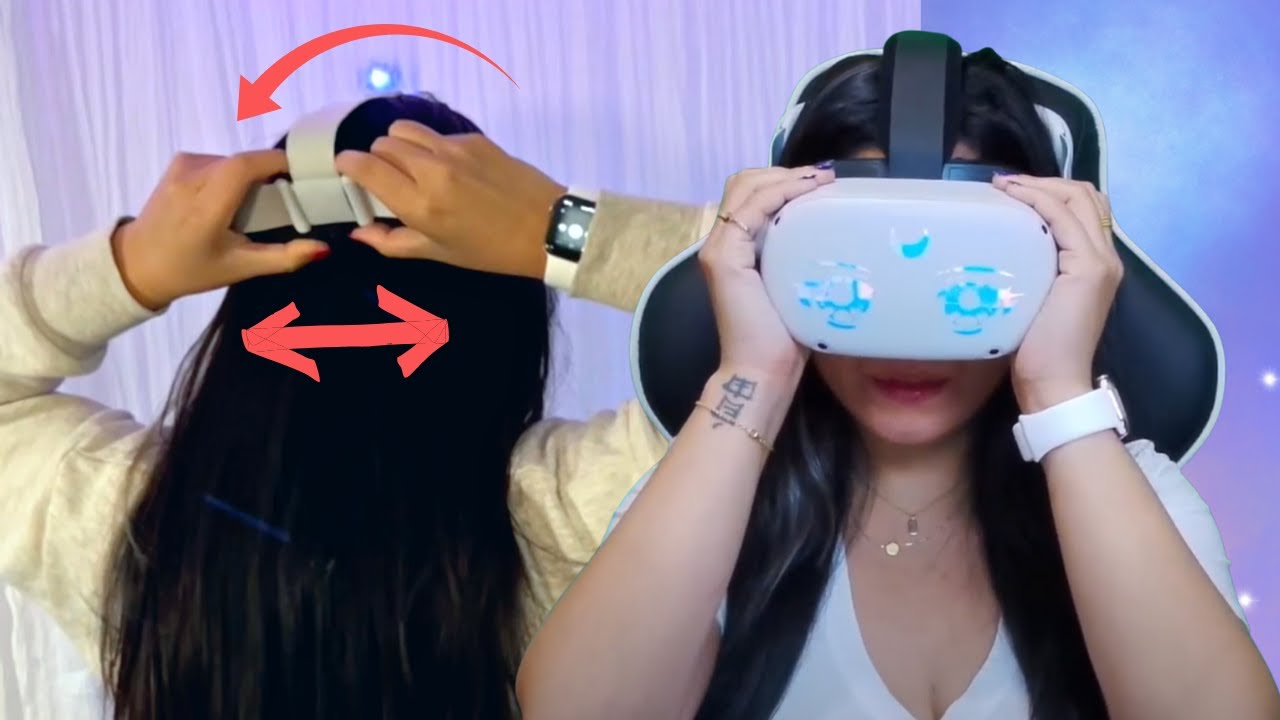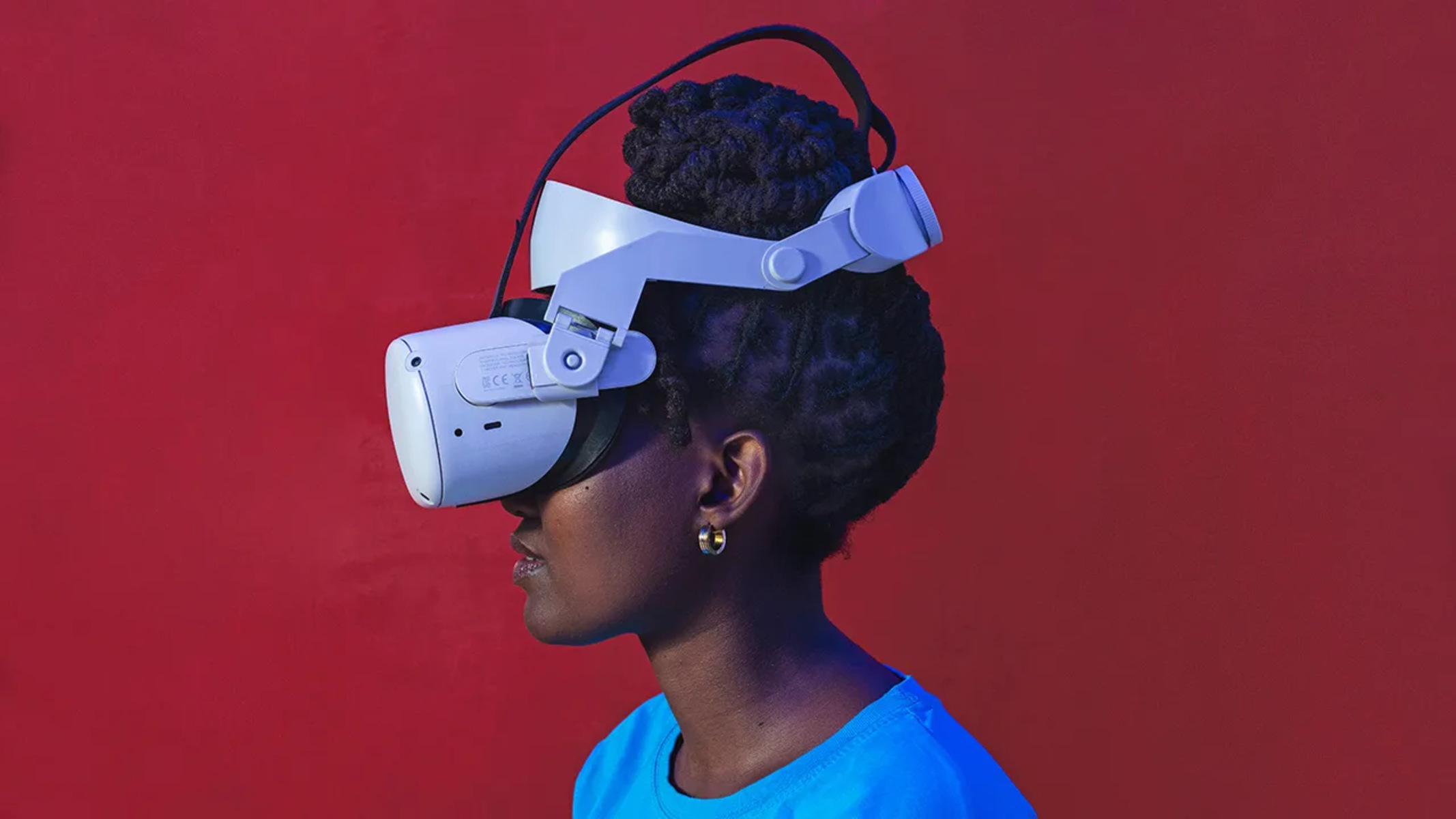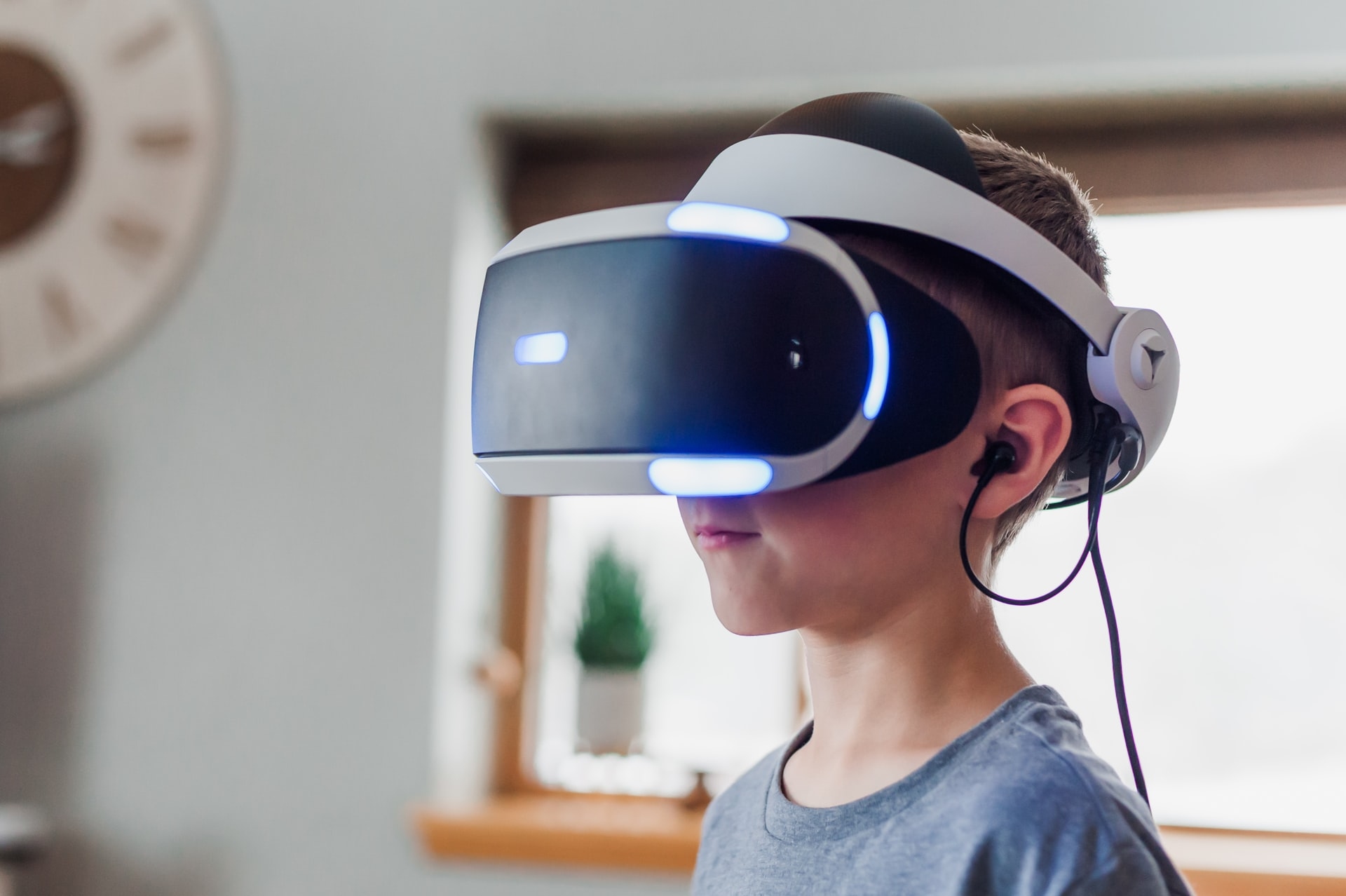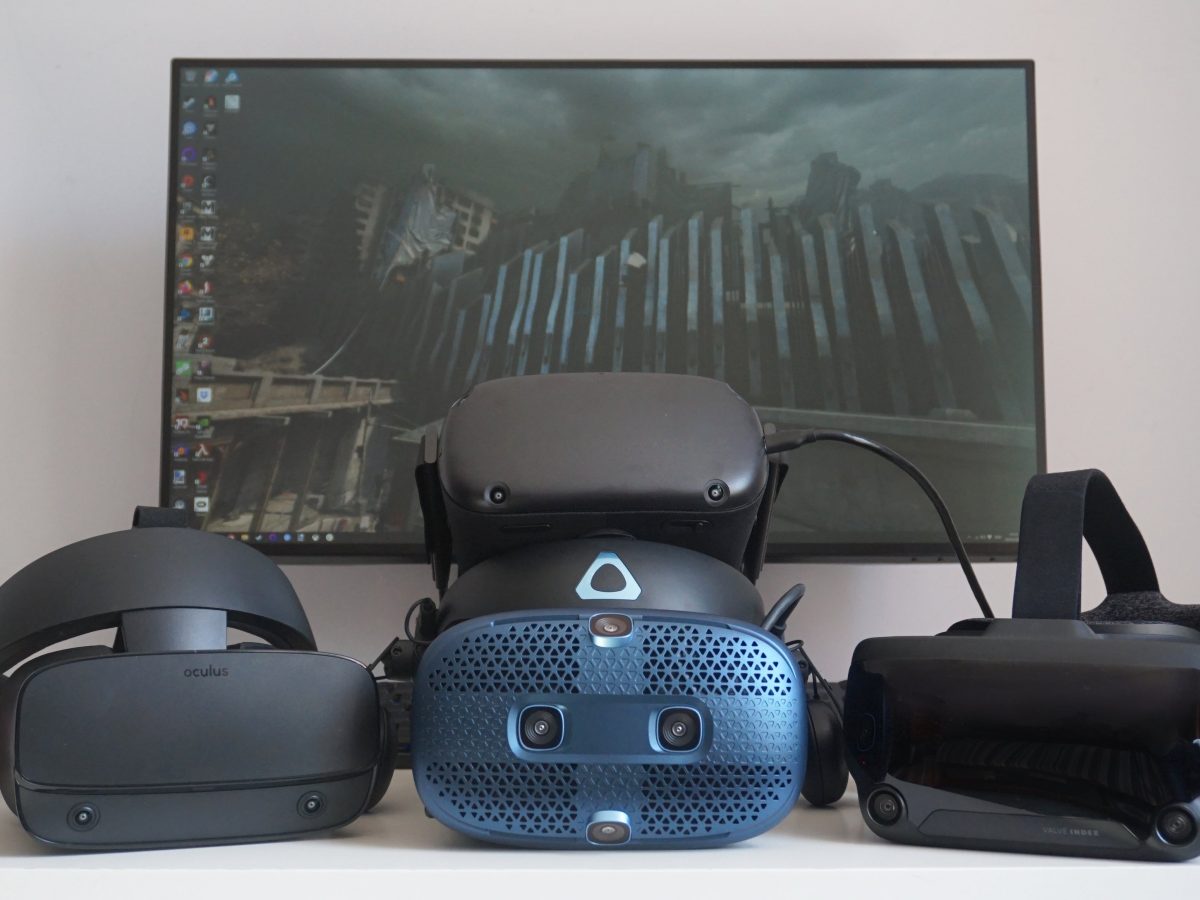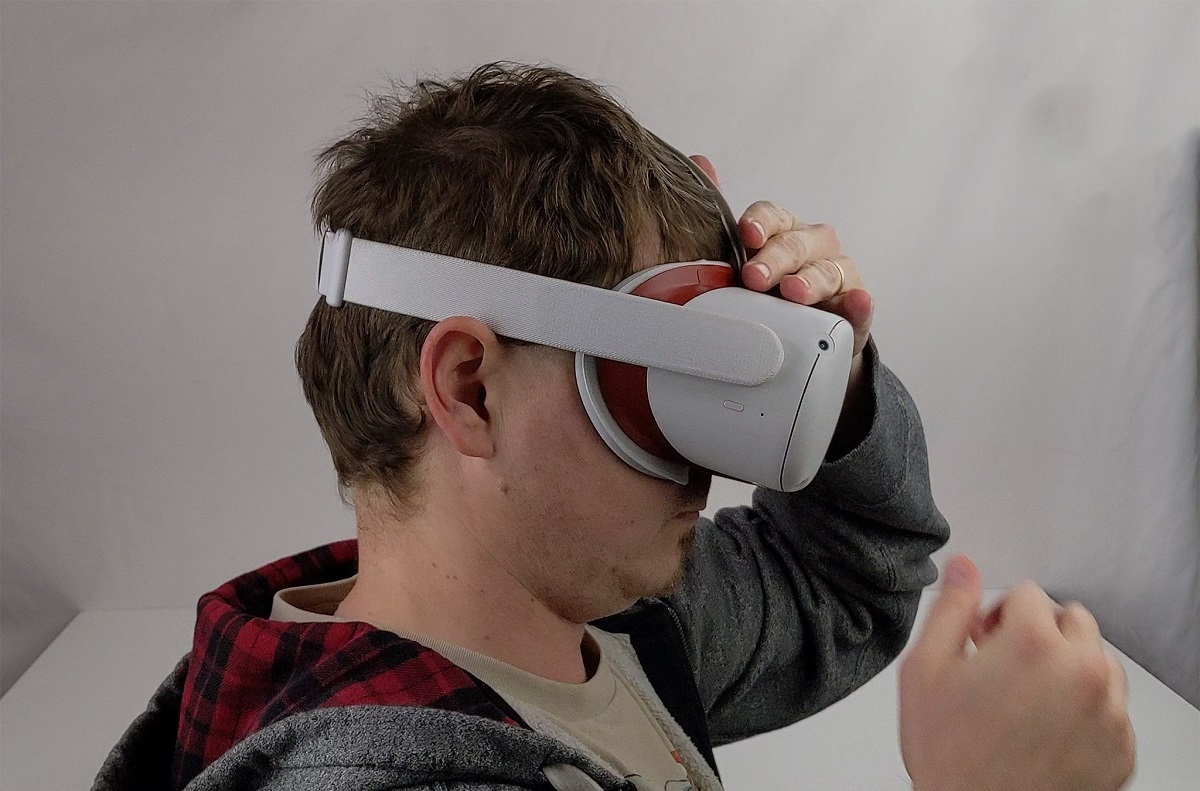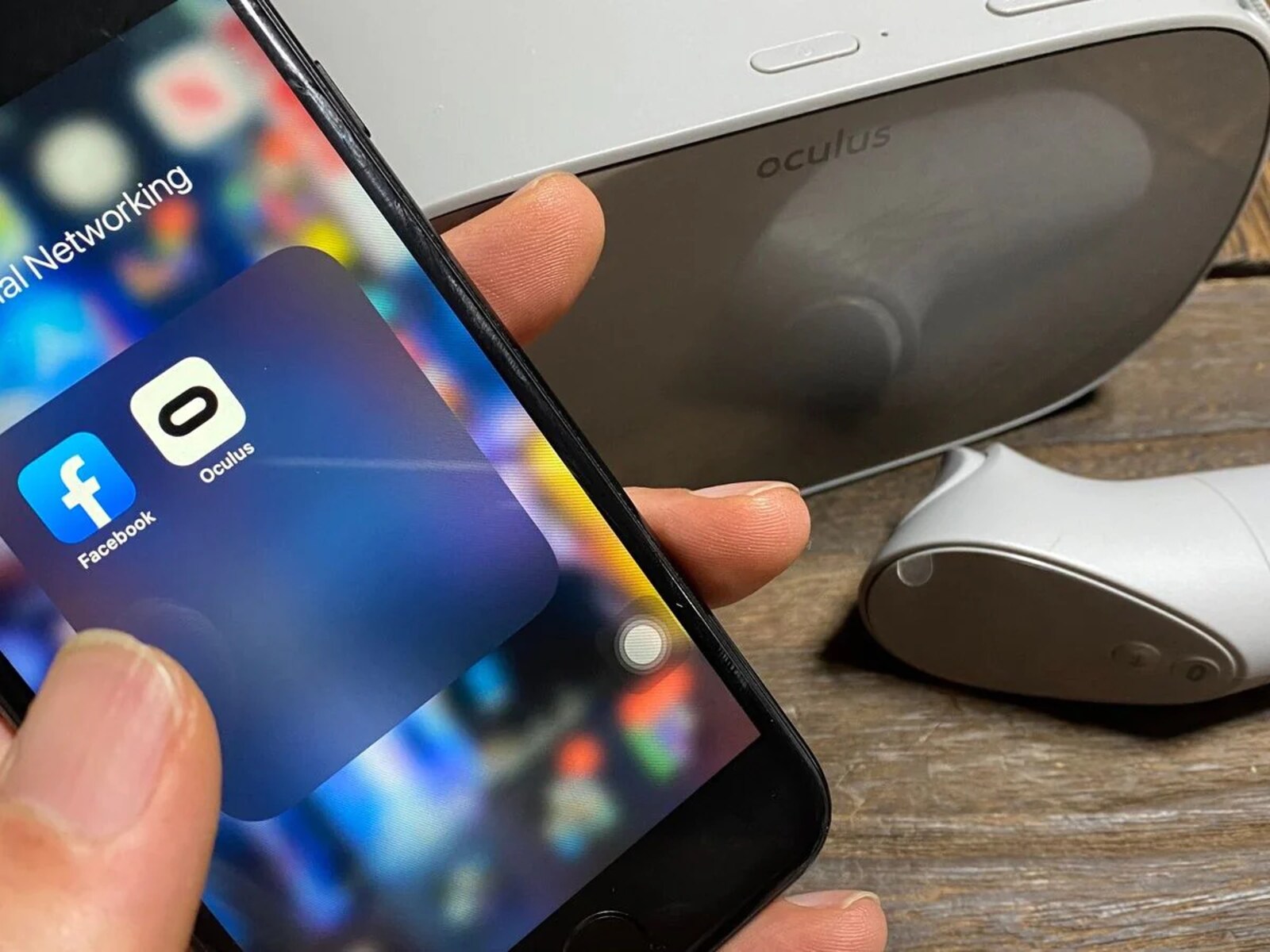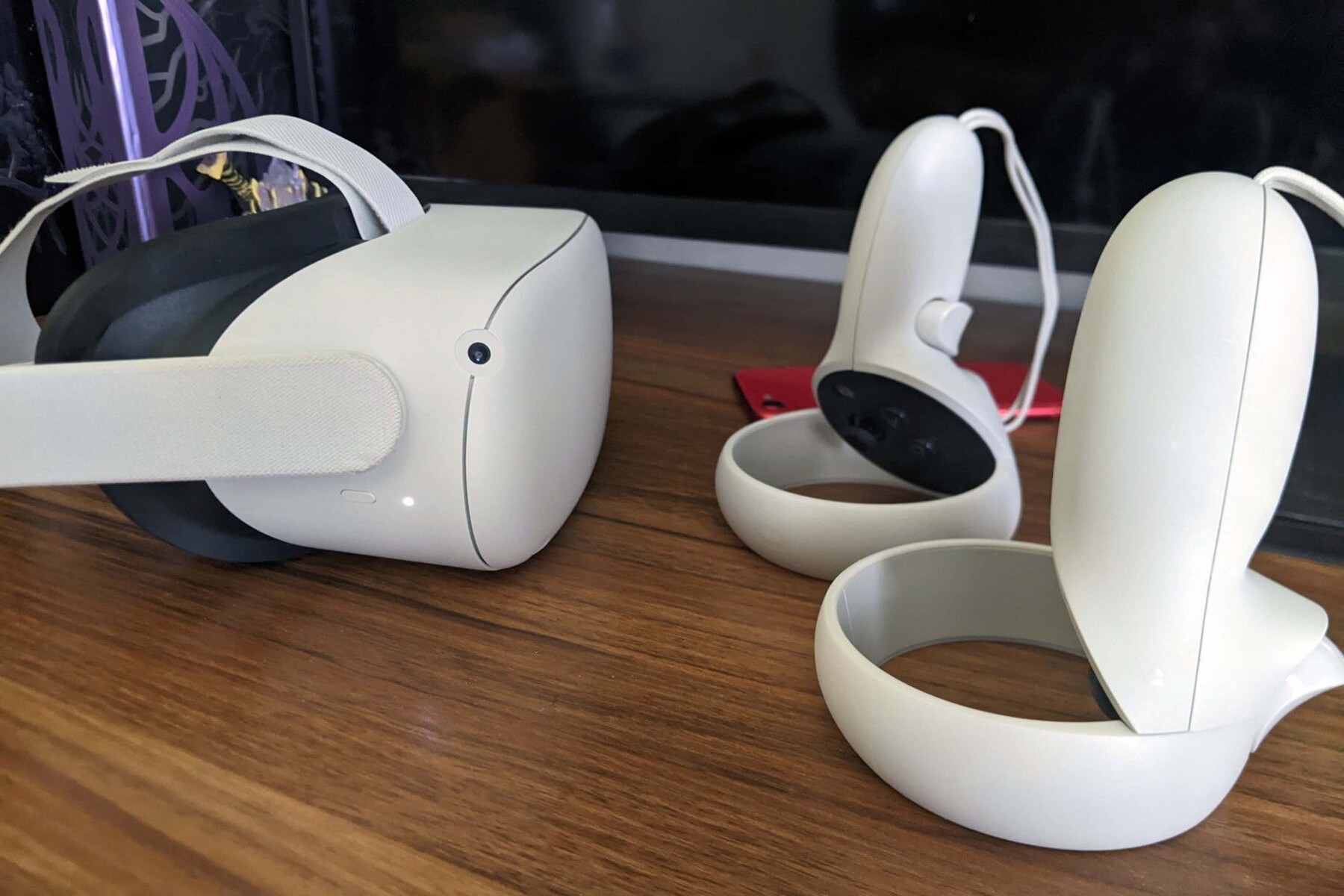Introduction
A Virtual Reality (VR) headset provides an immersive and breathtaking experience, allowing users to explore virtual worlds and engage with digital content in a whole new way. Whether you’re using a VR headset for gaming, educational purposes, or simply for entertainment, it’s important to ensure that the headset is securely and comfortably fitted. This not only enhances the overall experience but also prevents any discomfort or potential distractions.
In this article, we will guide you through the process of tightening a VR headset to ensure a snug fit. We will cover important steps to adjust the head strap, side straps, and top strap of the headset to achieve optimal comfort and stability. Additionally, we will discuss the benefits of using foam inserts or padding for enhanced cushioning during prolonged VR sessions.
By following these simple steps, you’ll be able to enjoy your VR experience to the fullest without any interruptions or discomfort. So, let’s dive in and learn how to tighten a VR headset correctly!
Why Tightening the VR Headset is Important
Properly tightening your VR headset is crucial for several reasons. Firstly, a loose headset can affect the immersion and overall experience. If the headset is not securely fitted, it may shift or move during use, leading to a loss of visual clarity and disorientation. Tightening the headset ensures that it stays in place, allowing you to fully immerse yourself in the virtual environment without any distractions.
In addition to maintaining immersion, tightening the VR headset also helps in preventing discomfort. VR experiences often involve rapid head movements and intense gameplay, which can cause the headset to move around if not properly secured. This can result in a strain on your neck and head, leading to discomfort and potentially ruining your VR experience.
Furthermore, a correctly tightened VR headset prevents light leakage. Light leakage occurs when external light sources seep into the headset, causing distractions and reducing the overall quality of the virtual imagery. By making sure the headset is properly fitted, you can minimize light leakage and enjoy a more immersive and visually immersive experience.
Another important reason to tighten your VR headset is safety. Some VR experiences involve physical movements and gestures, and having a loose headset increases the risk of accidental drops or falls. A securely tightened headset ensures that it stays firmly in place, reducing the chances of accidents during your VR sessions.
Lastly, tightening the VR headset enhances the overall comfort during extended use. The weight of VR headsets can put strain on the neck and head if not distributed evenly. By adjusting the straps and securing the headset, you can alleviate pressure points and create a more comfortable and enjoyable experience, even during long VR sessions.
Overall, proper tightening of the VR headset is essential for maintaining immersion, preventing discomfort, minimizing light leakage, ensuring safety, and enhancing comfort. Now, let’s move on to the steps on how to tighten your VR headset correctly.
Steps to Tighten a VR Headset
Now that we understand the importance of tightening a VR headset, let’s dive into the step-by-step process to ensure a snug and comfortable fit:
- Check the Head Strap: Start by inspecting the head strap of your VR headset. Ensure that it is in good condition and not worn out or damaged. If needed, replace the head strap to maintain a secure fit.
- Adjust the Head Strap Length: Put the headset on your head and adjust the head strap length to fit snugly but comfortably. The headset should sit securely on your face without feeling too tight or too loose.
- Position the VR Display Correctly: Make sure that the VR display is aligned properly with your eyes. Adjust the position of the headset on your face by moving it up or down until you see a clear and focused image.
- Tighten the Side Straps: Move on to tightening the side straps of the headset. Pull the straps to tighten them evenly on both sides, making sure they’re not too loose or too tight. The headset should feel secure without putting excessive pressure on your head.
- Secure the Top Strap: Many VR headsets feature a top strap that helps distribute the weight and provide additional support. Adjust the top strap so that it sits comfortably on the top of your head, further stabilizing the headset.
- Use Foam Inserts or Padding for Comfort: To enhance comfort, consider using foam inserts or padding. These can be placed on the areas where the headset comes into contact with your face, providing cushioning and reducing pressure points.
By following these steps, you can tighten your VR headset effectively, ensuring a secure, comfortable, and immersive experience. Remember to periodically check the fit of the headset and make any necessary adjustments to maintain optimal comfort and performance.
Check the Head Strap
The head strap is an essential component of a VR headset, as it ensures a secure and comfortable fit. Before tightening your VR headset, it’s important to check the condition of the head strap. Inspect it for any signs of wear and tear, such as frayed edges, loose stitching, or damaged buckles.
If you notice any damage or if the head strap is no longer providing a secure hold, it may be necessary to replace it. Most VR headsets come with replacement head straps available for purchase, ensuring that you can continue to enjoy your VR experience safely and comfortably.
Ensure that the head strap is free from any dirt, debris, or sweat buildup. Regular cleaning and maintenance of the head strap will help to prolong its lifespan and maintain its functionality.
Checking the head strap before tightening your VR headset is crucial to guaranteeing a secure and comfortable fit. Start by inspecting it for any damage and cleaning it, if necessary. A well-maintained head strap will contribute to a more enjoyable and immersive VR experience.
Adjust the Head Strap Length
Once you have checked the condition of the head strap, the next step in tightening your VR headset is adjusting the strap length. This is crucial to ensure a secure and comfortable fit on your head.
Start by putting the VR headset on and positioning it on your head. Adjust the strap length by pulling on the straps or using the adjustable buckle or Velcro fasteners, depending on the design of your headset.
The goal is to have the headset sit securely on your face without feeling too tight or too loose. If the strap is too loose, the headset may move around during use, affecting your experience and potentially causing discomfort. On the other hand, if the strap is too tight, it may create unnecessary pressure on your head and leave marks on your skin.
Take the time to find the right balance. Adjust the strap length gradually, testing the fit after each adjustment. Ensure that the headset is snug against your face, but not excessively tight. It should feel secure and stable, allowing you to move your head freely without any slippage or discomfort.
If your VR headset has additional straps or adjustments, such as side straps or a top strap, make sure to adjust them accordingly after adjusting the head strap length. These additional straps contribute to the overall stability of the headset and help distribute the weight more evenly.
Remember, a properly adjusted head strap length is essential for a comfortable and secure VR experience. Take the time to find the optimal fit, ensuring that the headset stays in place without causing discomfort or distractions.
Position the VR Display Correctly
Once you have adjusted the head strap length, the next step in tightening your VR headset is positioning the VR display correctly. Proper positioning ensures that you have a clear and focused image, enhancing the overall immersion of your VR experience.
Start by putting on the VR headset and making sure it is centered on your face. Adjust the position of the headset up or down until the VR display is aligned with your eyes. This will ensure that you are looking directly through the lenses, maximizing the clarity and sharpness of the virtual imagery.
It’s important to note that every individual’s face shape and eye position may vary, so take the time to make the necessary adjustments for your own comfort and visual acuity.
Once the VR display is in the correct position, check for any gaps between the headset and your face. Light leakage can occur if external light sources seep into the headset, causing distractions and reducing the overall quality of the virtual imagery.
If you notice any gaps, try readjusting the head strap or experimenting with foam inserts or padding to create a snug fit. Foam inserts or padding can help fill in the gaps and provide additional comfort and stability.
By positioning the VR display correctly, you’ll ensure that the virtual imagery appears crisp and clear, contributing to a more immersive and enjoyable VR experience.
Remember to readjust the position of the VR display if you share the headset with someone who has a different eye positioning or if you switch between multiple users.
Tighten the Side Straps
After adjusting the head strap and positioning the VR display correctly, it’s time to tighten the side straps of your VR headset. The side straps play a crucial role in keeping the headset secure on your head and preventing any unnecessary movement or slippage.
Start by locating the side straps on the headset. These are usually located on each side and can be adjusted using buckles, Velcro, or other fastening mechanisms.
While tightening the side straps, make sure to do so evenly on both sides. This will help distribute the pressure evenly and ensure a balanced fit. Tighten the straps gradually, checking the fit after each adjustment.
The goal is to have the side straps snugly hold the headset against your face without causing discomfort. Be mindful not to overtighten the straps, as this can lead to unnecessary pressure on your head and face.
As you tighten the side straps, pay attention to the stability of the headset. It should feel secure and stable, with minimal movement when you shake your head or make quick movements. If you notice any slippage or the headset feels loose, adjust the side straps further until you achieve a secure fit.
Keep in mind that everyone’s head shape and size are different, so take the time to find the right balance of tightness for your comfort.
By properly tightening the side straps, you ensure that the VR headset stays securely in place and allows for smooth and uninterrupted VR experiences.
If your headset has additional straps, such as a top strap or back strap, make sure to adjust them as well to further improve the stability and balance of the headset on your head.
Secure the Top Strap
In addition to the side straps, many VR headsets feature a top strap that provides additional support and stability. Securing the top strap properly is essential for maintaining a secure and comfortable fit during your VR experience.
Locate the top strap on your VR headset. It is usually located at the top or back of the headband, above the ear cups or headband padding.
Put the VR headset on and adjust the top strap so that it sits comfortably on the top of your head. The strap should provide a balanced distribution of the headset’s weight, reducing the strain on your face and ensuring a secure fit.
When adjusting the top strap, make sure it is not too tight or too loose. It shouldn’t cause excessive pressure or discomfort on the top of your head. The goal is to have the strap snugly hold the headset in place without causing any irritation or headaches.
While tightening the top strap, be mindful of maintaining the right tension on the side straps. Adjust them as needed to create a comfortable and secure fit, without compromising the overall stability of the headset.
By securing the top strap, you add an extra layer of stability to your VR headset. It prevents the headset from sliding forward or backward, especially during intense movements or gameplay.
Take the time to find the right balance between comfort and stability when securing the top strap. This ensures that you can enjoy your VR experience without any distractions or discomfort.
If your VR headset doesn’t have a top strap, focus on adjusting the side straps and headband to achieve a secure and comfortable fit.
Use Foam Inserts or Padding for Comfort
While tightening your VR headset, it’s important to prioritize comfort, especially during extended VR sessions. Foam inserts or padding can be used to provide additional cushioning and alleviate pressure points, enhancing overall comfort.
Consider using foam inserts or padding on the areas where the VR headset comes into contact with your face, such as the forehead, cheeks, and nose. These inserts help create a snug and comfortable fit, reducing any discomfort caused by the headset’s pressure.
Foam inserts are available in different thicknesses and materials. Opt for soft and breathable materials that won’t cause irritation or excessive heat buildup. Memory foam or gel inserts are popular choices, as they mold to the shape of your face, providing customized comfort.
To add foam inserts or padding, gently attach them to the headset’s contact points. Make sure they adhere securely and don’t obstruct the lenses or sensors of the VR headset.
Another option is using a VR headset cover or facial interface with built-in padding. These covers provide an extra layer of cushioning, allowing for a more comfortable and hygienic VR experience. They are often washable, ensuring easy maintenance.
Using foam inserts or padding not only improves comfort but also helps with hygiene. They can be easily removed and cleaned, preventing sweat, dirt, and oils from accumulating on the headset’s foam padding.
Prioritize your comfort by incorporating foam inserts or padding into your VR headset setup. Experiment with different materials and thicknesses to find the most comfortable option for your needs. By doing so, you’ll be able to enjoy longer and more immersive VR sessions without discomfort or distractions.
Conclusion
Tightening your VR headset is crucial for ensuring a secure, comfortable, and immersive experience. By following the steps outlined in this article, you can achieve a snug fit that eliminates distractions and discomfort. Checking the condition of the head strap, adjusting its length, and positioning the VR display correctly are the initial steps to a properly fitted headset.
Tightening the side straps and securing the top strap will enhance the stability of the headset, preventing unnecessary movement. Additionally, using foam inserts or padding can provide added comfort and alleviate pressure points.
Remember that each person’s comfort and fit requirements may vary, so take the time to find the perfect adjustments for your own needs. Regularly check the fit of your VR headset and make any necessary modifications to maintain optimal comfort and performance.
By tightening your VR headset correctly, you can fully immerse yourself in virtual worlds, enjoy a hassle-free experience, and make the most out of your VR adventures. So, follow these steps and get ready to embark on exciting virtual journeys like never before!







